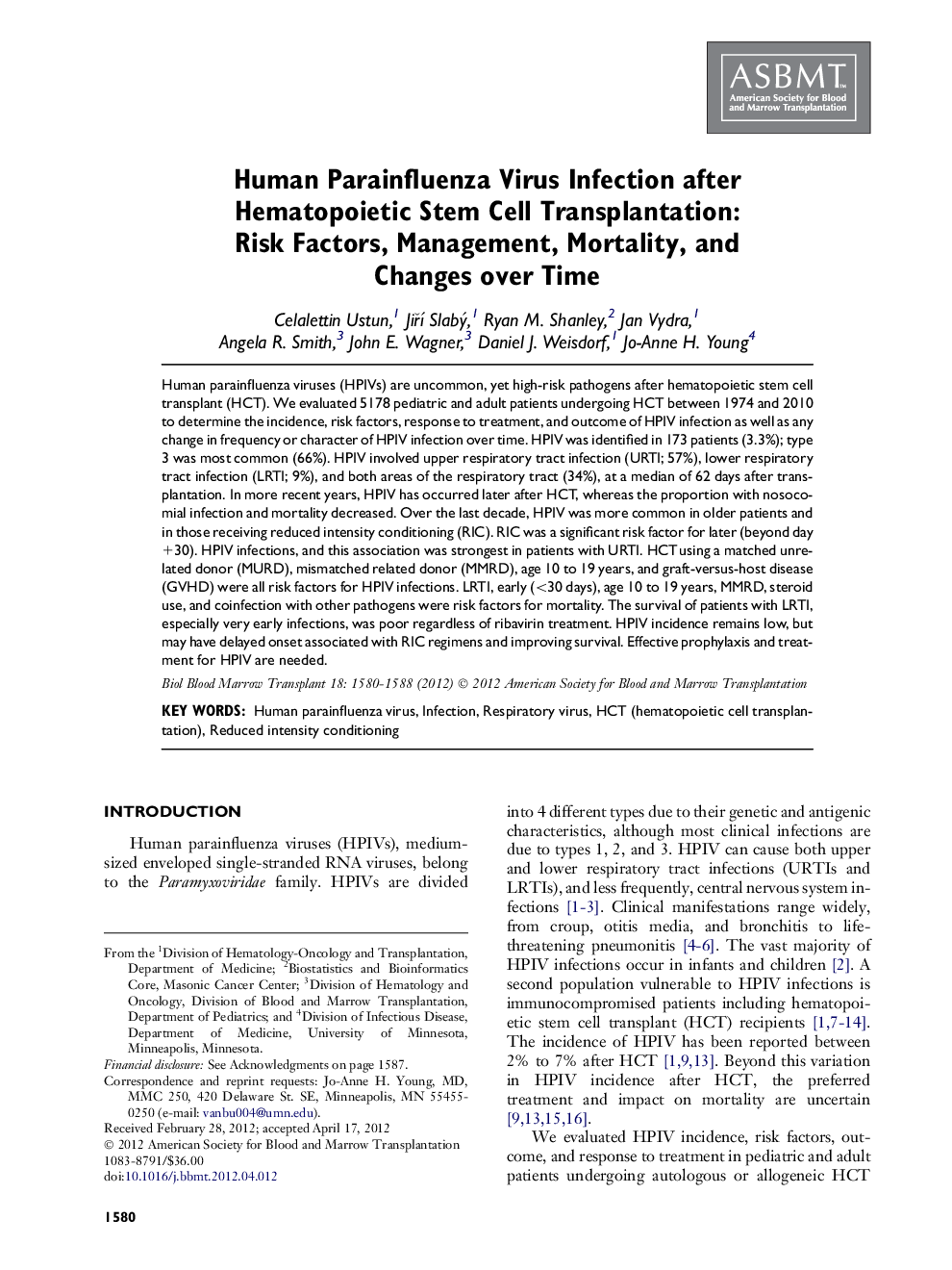| Article ID | Journal | Published Year | Pages | File Type |
|---|---|---|---|---|
| 2102618 | Biology of Blood and Marrow Transplantation | 2012 | 9 Pages |
Human parainfluenza viruses (HPIVs) are uncommon, yet high-risk pathogens after hematopoietic stem cell transplant (HCT). We evaluated 5178 pediatric and adult patients undergoing HCT between 1974 and 2010 to determine the incidence, risk factors, response to treatment, and outcome of HPIV infection as well as any change in frequency or character of HPIV infection over time. HPIV was identified in 173 patients (3.3%); type 3 was most common (66%). HPIV involved upper respiratory tract infection (URTI; 57%), lower respiratory tract infection (LRTI; 9%), and both areas of the respiratory tract (34%), at a median of 62 days after transplantation. In more recent years, HPIV has occurred later after HCT, whereas the proportion with nosocomial infection and mortality decreased. Over the last decade, HPIV was more common in older patients and in those receiving reduced intensity conditioning (RIC). RIC was a significant risk factor for later (beyond day +30). HPIV infections, and this association was strongest in patients with URTI. HCT using a matched unrelated donor (MURD), mismatched related donor (MMRD), age 10 to 19 years, and graft-versus-host disease (GVHD) were all risk factors for HPIV infections. LRTI, early (<30 days), age 10 to 19 years, MMRD, steroid use, and coinfection with other pathogens were risk factors for mortality. The survival of patients with LRTI, especially very early infections, was poor regardless of ribavirin treatment. HPIV incidence remains low, but may have delayed onset associated with RIC regimens and improving survival. Effective prophylaxis and treatment for HPIV are needed.
